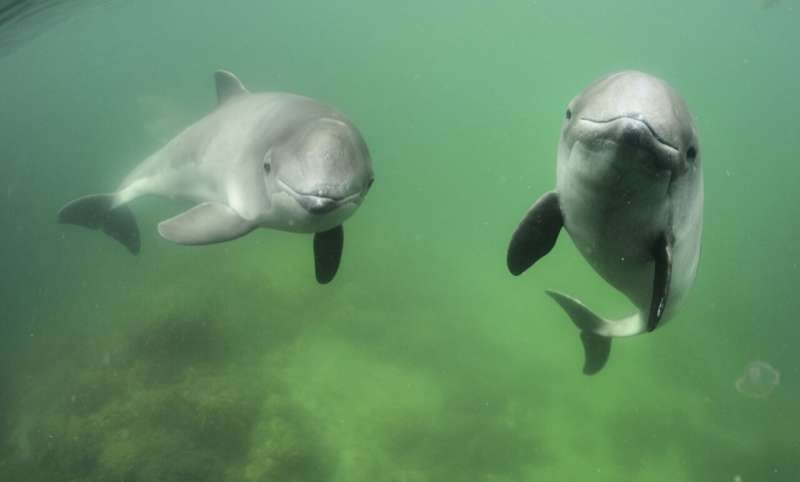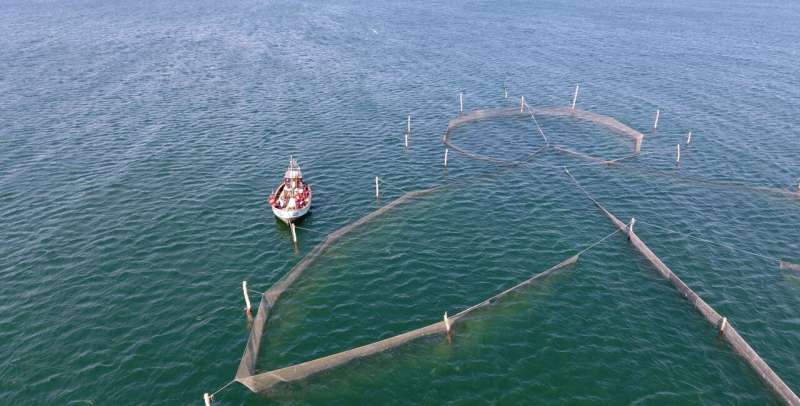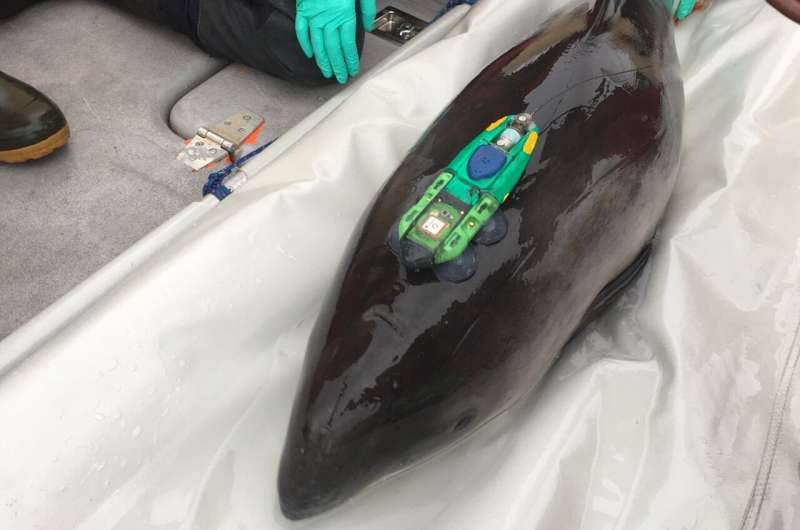This article has been reviewed according to Science X's editorial process and policies. Editors have highlighted the following attributes while ensuring the content's credibility:
fact-checked
peer-reviewed publication
trusted source
proofread
Constantly on the hunt for food: Harbor porpoises more vulnerable than previously thought to disturbances from humans

Summer is coming and that means more boats in the sea. Danish coastal waters are especially cluttered with small boats in the summertime: Locals water skiing, going fishing or just riding around the beautiful bays and fjords.
In general, people relax and have a good time on the water, but that is unfortunately not the case for the harbor porpoise. The more motor boats speeding noisily around, the more they are disturbed. And that can be a big problem for the animals.
Because the harbor porpoise is a relatively large animal that feeds on small fish, it needs to spend a lot of time hunting. New research shows that it spends around 60% of its time on the hunt, but if noise from the motor boats disturbs them and makes them quit the pursuit of fish, this could have negative implications for the survival of these animals, explains postdoc Laia Rojano Doñate from the Department of Ecoscience at Aarhus University. She is one of the researchers behind the new results.
She says, "Harbor porpoises spend a lot of energy in a day. Not because they spend it hunting for fish, but because they need it to stay warm.
"Because they live in cold waters, it takes a lot of energy for them to thermoregulate. That's why it's a big problem if they are disturbed by motor boats and stop eating, she says."
The research is published in the journal Science Advances.
Almost never alone
Over the years, Laia Rojano Doñate and her colleagues have put tracking devices on several harbor porpoises to learn about their behavior and how they may be disturbed by humans in boats.
In 2018, they investigated how often the harbor porpoises are near noise from boats—and the number surprised her. "We could hear the frequencies of motor boats near the animals 80% of the time. That is a huge problem, when they need to hunt 60% of the time," she says.

The tracking device not only listens to everything going on around the harbor porpoises, it also measures the depth at which the animals dive and has a GPS tracker on it. The data from 2018 showed clearly that some animals suddenly stopped hunting when motor boats approached.
She says, "When hunting for fish they make a buzz sound just before they catch the prey. The sound helps them navigate in the dark waters deep below. But when motor boats were around they sometimes stopped buzzing.
"That may not be a problem if it happens once or twice a day. But if it's a constant nuisance to the animals, they don't catch the fish they need. In the long run that will kill them."
Hunts like a grazing cow
The harbor porpoise requires a lot of energy to stay warm in the cold waters. But because it feeds on small fish, it needs to catch around 2,000 fish a day and that requires hunting most of the time. Kind of like a cow grazing and eating most of the day.
Like cows, foraging is very cost-efficient for the harbor porpoise.
Researchers have studied the animal extensively—both in captivity and in the wild. That's how they know exactly how much energy they spend doing different tasks.
For example, it breathes around 4,000 times a day. Each breath burns around 5 kilojoules. Do the math and that amounts to 20 megajoules of energy required to get through a single day.
By injecting water labeled with stable isotopes into the blood of captive harbor porpoises—isotopes that disappear as oxygen in the blood is burned during cellular respiration—the researchers have tested that these numbers are correct. They now have a formula for calculating the energy expenditure of harbor porpoises of different sizes.

Harbor porpoises are disappearing fast
For many years, researchers thought that the harbor porpoises in Kattegat were fine. The population was stable at around 40,000 individuals and pollution, overfishing and getting caught in the fishing nets didn't seem to make an impact.
But now it seems as though a tipping point has been reached and the population is disappearing fast. In the latest count only 14,000 harbor porpoises were left.
One explanation for the dwindling population is that there are fewer and smaller fish in the sea. This forces the harbor porpoises to spend more time on the hunt, which again makes them more vulnerable to disturbances from boats, Laia Rojano Doñate explains.
"Getting disturbed by boats is not the only cause. More pollution and getting caught in the fishing nets are also part of the explanation of why harbor porpoises are disappearing fast.
"Last but not least, the gray seal population is growing. Gray seals hunt the harbor porpoises and eat them. So it's not easy being a harbor porpoise these days," she says.
Lives close to the coast
Even though the harbor porpoise is part of the whale family, it spends a lot of time in coastal water. At least that is the case for the population living in Kattegat.
The porpoises in the Kattegat hunt fish in shallow waters, but that is also where most of the recreational motor boats are. And that is a problem, Laia Rojano Doñate explains.
"We might not even notice it, but when we venture out on the sea on a sunny summer day, we might be disturbing a lot of animals. If we are to do something about this problem, we have to change our habits."
Not only would zones where motor boats are prohibited help the animals, but a lot less could make a difference.
"When out on the water, it would help the animals if people didn't speed up and slow down or went around haphazardly. I know that's part of the fun, but not for the harbor porpoises," she concludes.
More information: Laia Rojano-Doñate et al, Low hunting costs in an expensive marine mammal predator, Science Advances (2024). DOI: 10.1126/sciadv.adj7132
Journal information: Science Advances
Provided by Aarhus University



















